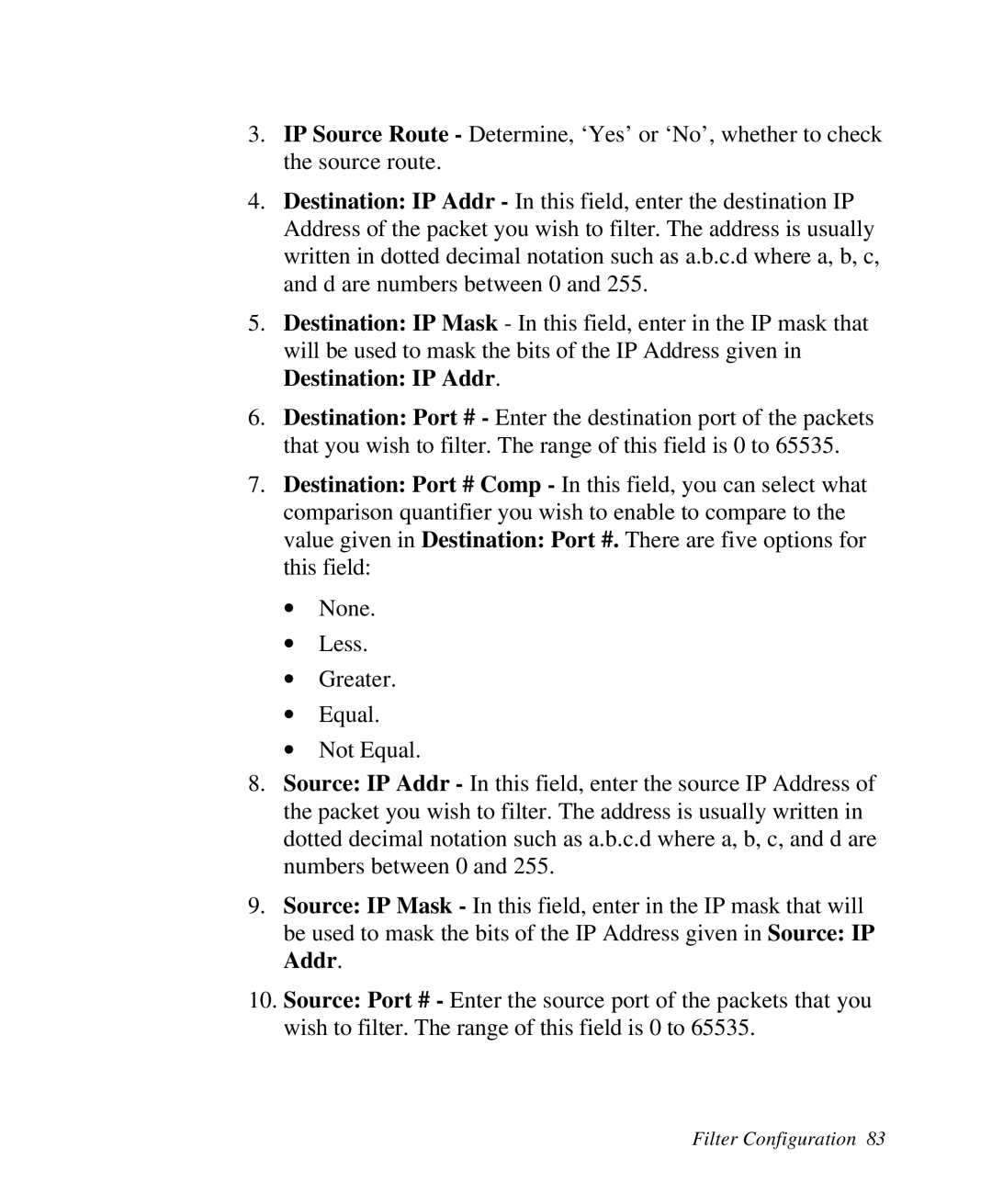3.IP Source Route - Determine, ‘Yes’ or ‘No’, whether to check the source route.
4.Destination: IP Addr - In this field, enter the destination IP Address of the packet you wish to filter. The address is usually written in dotted decimal notation such as a.b.c.d where a, b, c, and d are numbers between 0 and 255.
5.Destination: IP Mask - In this field, enter in the IP mask that will be used to mask the bits of the IP Address given in Destination: IP Addr.
6.Destination: Port # - Enter the destination port of the packets that you wish to filter. The range of this field is 0 to 65535.
7.Destination: Port # Comp - In this field, you can select what comparison quantifier you wish to enable to compare to the value given in Destination: Port #. There are five options for this field:
∙None.
∙Less.
∙Greater.
∙Equal.
∙Not Equal.
8.Source: IP Addr - In this field, enter the source IP Address of the packet you wish to filter. The address is usually written in dotted decimal notation such as a.b.c.d where a, b, c, and d are numbers between 0 and 255.
9.Source: IP Mask - In this field, enter in the IP mask that will
be used to mask the bits of the IP Address given in Source: IP Addr.
10.Source: Port # - Enter the source port of the packets that you wish to filter. The range of this field is 0 to 65535.
